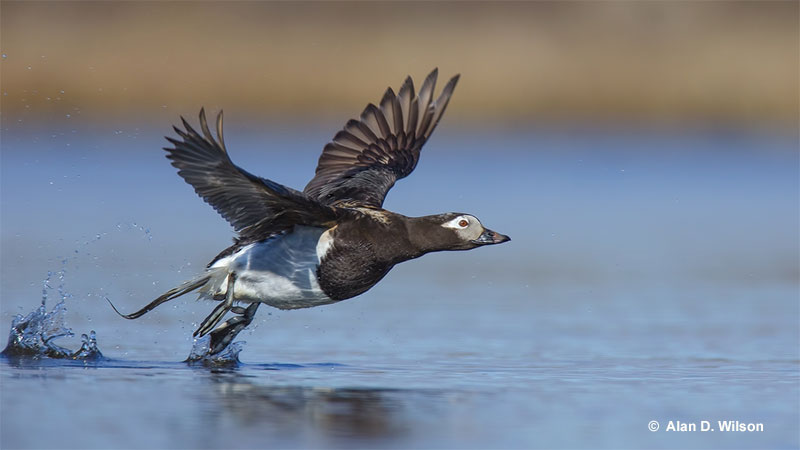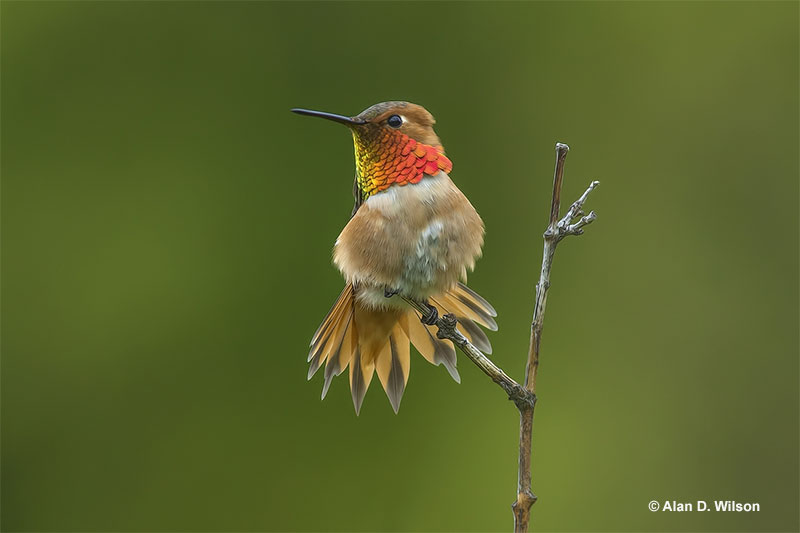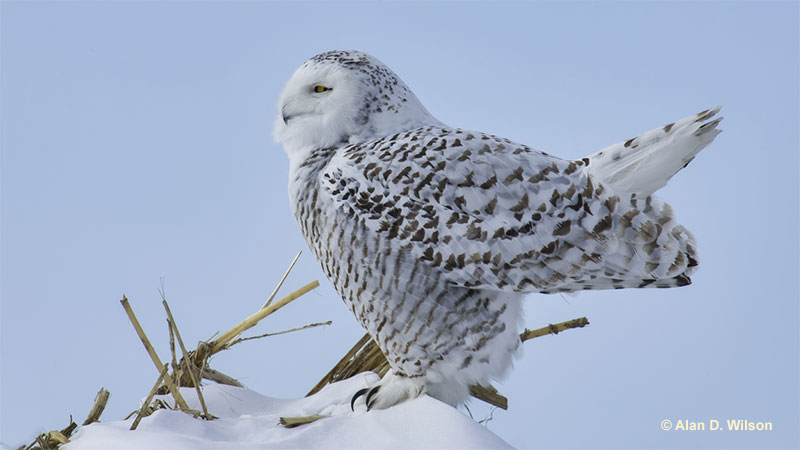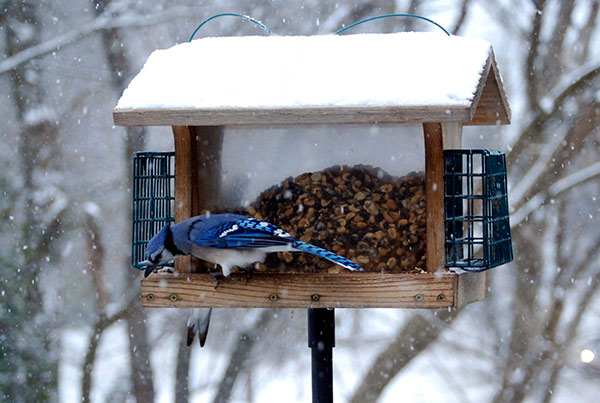
Birds can survive in an incredible variety of places. They live in hot deserts, cool mountain forests, humid jungles, and on the ice floes of Antarctica!
No matter where they live, birds have to keep warm in cold conditions, and stay cool in really hot weather. On frigid winter nights, it’s especially hard to believe that any bird can survive!
However, the following morning we see chickadees at the feeder and hear crows calling nearby. How do birds survive in freezing cold weather? Are birds warm-blooded?
See this article for answers and more about how birds stay warm!
On this page
The Body Temperature Of Birds
Birds are warm-blooded animals with a fairly high body temperature. Compared to us humans, birds are hot, all of the time.
On average, birds have body temperatures of 104 to 106 degrees and even 109 degrees ; temperatures that would be fatal for a person!
In general, small birds are hotter than bigger ones, with hummingbirds having higher average temperatures than other species.

Since both birds and people are warm-blooded (or “endotherms”), it might seem odd that they have such hot body temperatures. However, it makes sense when we look at some of the differences between birds and humans.
Related: The anatomy of birds
To accomplish some of the special things that birds do, they need to generate a lot of energy. Take flying, for example. Birds might have hollow bones and other adaptations that help them fly but defying gravity is never easy! To fly, they also need a high rate of metabolism that generates and requires heat.
Not to mention, a hot body temperature also helps keep birds warm when they are exposed to cold winds high above the ground.
Birds also need warm bodies to incubate their eggs. If they can’t keep their eggs at just the right temperature, they won’t hatch.
The difference between warm-blooded and cold-blooded?
People, birds, and other warm-blooded animals generate and maintain their own body heat. They accomplish this by converting energy from food and shivering their muscles. Officially known as “endotherms”, mammals and birds don’t have to rely on warm weather or basking in the hot sun to stay warm.
That can help, but as long as you can automatically regulate your own body temperature, you don’t need to. Birds and mammals do this with a special organ in the brain called the “hypothalamus”. Like a thermostat, it helps ensure that the body maintains a temperature ideal for bodily functions.
“Cold-blooded” animals like reptiles, insects, and amphibians lack the ability to regulate their own body temperature. Instead, they have to rely on the surrounding temperature and warm up by sitting under the sun or on a warm surface. To cool off, they find shade or go underground.
Although their blood isn’t really cold, since they have the same body temperature as their surroundings, it’s usually cooler than the body temperature of people. This is why snakes and other reptiles feel cold to the touch.
It’s also why reptiles can be lethargic and inactive on cold mornings.
How Do Birds Keep Warm?
In general, birds keep warm with the help of special feathers. Down feathers next to their body create tiny air bubbles that act as effective insulation.
Other feathers on top of the down also act as a sort of shield or cover that adds some extra insulation against the cold.
While all birds have feathers to keep them warm, some birds still live in much colder regions than others. Ravens, several owls, and some other species can live above or near the Arctic Circle!

It’s hard to understand how these birds can stay warm while others fly far to the south long before temperatures drop below freezing.
However, these species, like Ruffed Grouse, Ptarmigans, and Snowy Owls, have adaptations perfect for the low temperatures of a Canadian winter. They have more down feathers than other birds and plumage that covers just about every part of their body, even their legs and feet.
Waterbirds also have adaptations to maintain high body temperatures in the cold waters they frequent. Even though gulls, ducks, and penguins have bare feet, extensive blood vessels keep them from freezing.
They also have tightly overlapping feathers that shed water, and several aquatic birds have an insulating layer of blubber!
How do birds survive winters?
Ravens and other cold-tolerant birds mentioned above aren’t the only bird species that survive winter weather. Arctic species have adaptations for extremely low temperatures, but many other birds live in winter weather that only gets a little bit below freezing.
These species include Northern Cardinals, Dark-eyed Juncos, various sparrows, woodpeckers, and other common backyard birds. American Robins, Eastern Bluebirds, and Cedar Waxwings can also survive surprisingly cold weather.

All of these birds survive by fluffing up their down feathers to maintain warmth, and most also feed on energy-rich foods like seeds and nuts. Chickadees and some other birds also roost deep in tree cavities to stay warm, and some social species roost next to each other to share their body warmth.
However, if it gets too cold, many of these bird species can also migrate for a short distance. If the temperatures drop, they might move south, just far enough to find milder weather.
Have Birds Always Been Warm-Blooded?
How long have birds been warm-blooded? Were the first birds cold-blooded like snakes and other reptiles?
As far as we know, yes, birds have always been warm-blooded animals. Birds are a lot more ancient than most people realize. According to fossil evidence, the first animals with feathers and other bird-like structures date back 150 million years!
Based on other fossil evidence, many paleontologists believe that other bird-like animals probably existed well before that time!
Since those fossils showed animals with feathers and hair-like structures, they figure that those first birds were probably warm-blooded. Although no one is sure why they evolved to be warm-blooded, one theory is that birds and mammals might have become warm-blooded to avoid fungal infections.
Fungi tend to do much better in cool temperatures and indeed, they cause a lot of health problems for insects and other cold-blooded animals. Being warm-blooded makes it a lot more difficult for fungi to thrive.
Just as with modern birds, being warm-blooded would have also helped them be more active throughout the day. This would have been a good adaptation for catching insects. Itt also helped those early birds glide and then eventually fly.
Learn more: Bird Facts & Statistics That Will Blow Your Mind
Frequently Asked Questions
Are there any cold-blooded birds?
No, there are no cold-blooded birds. All birds are warm-blooded animals.
Where does the misconception that birds are cold-blooded come?
The misconception that birds are cold-blooded comes from the belief that only mammals are warm-blooded. However, this is not the case. The only cold-blooded organisms are insects, reptiles, and fish. In short, only birds and mammals are warm-blooded.
How do birds create body heat?
Birds create body heat by eating and metabolizing food.
Can birds have fevers?
Yes, birds can have fevers. Puffed feathers, as well as ruffed plumage, can be a sign. In some cases, they get better, but if they feel too sick, they are an easy target for raptors. In some cases, birds might even come to look for help from humans. This is why we have several wildlife organizations that are able to provide adequate help for our feathered friends.

